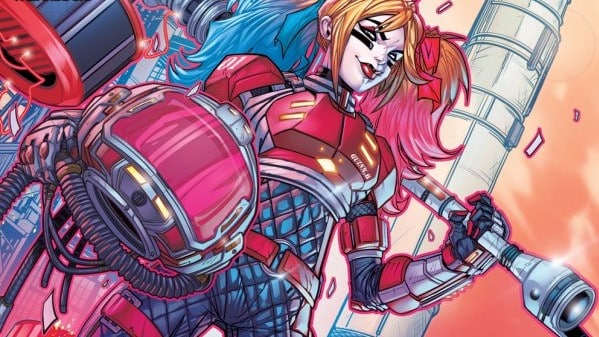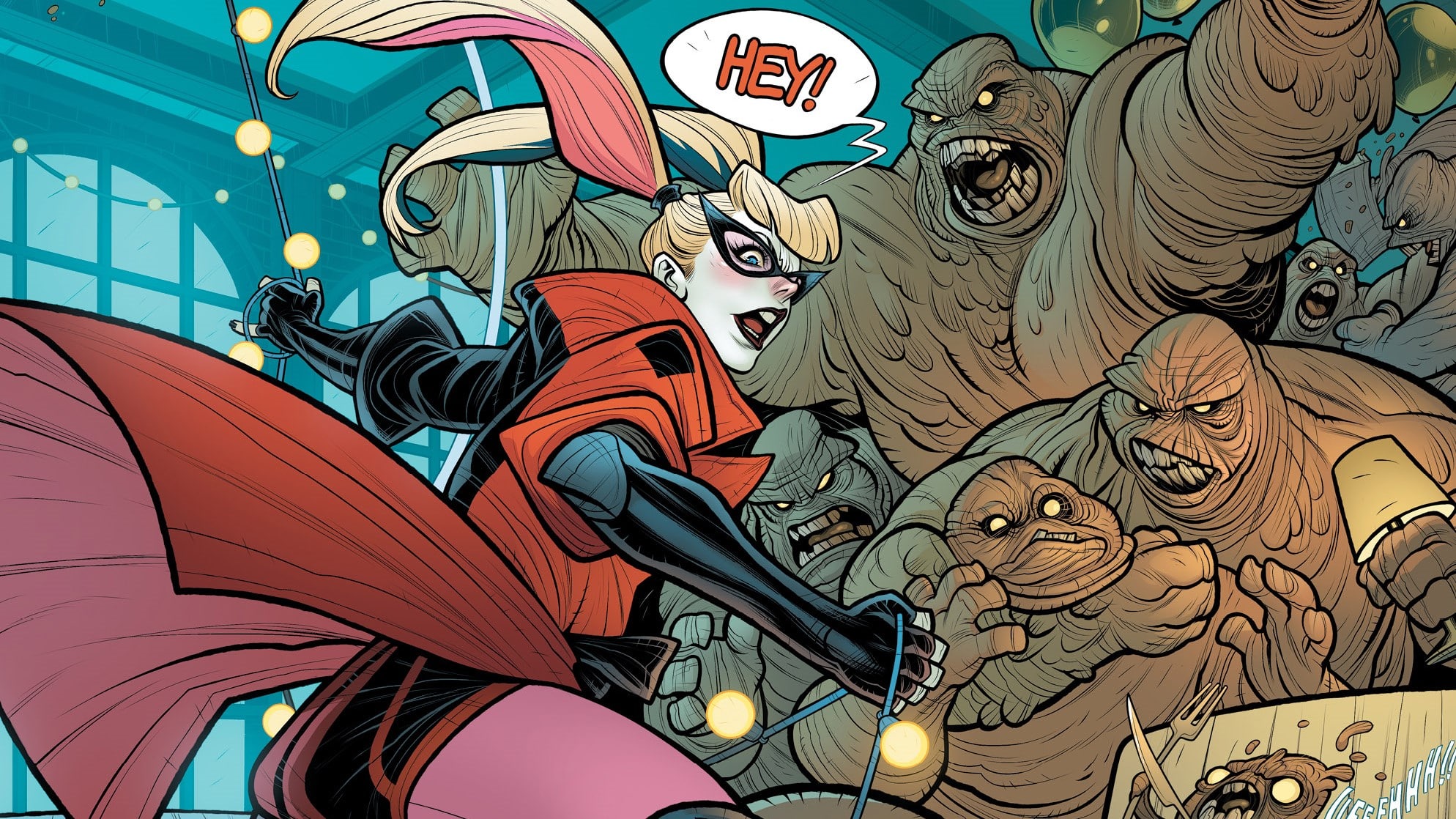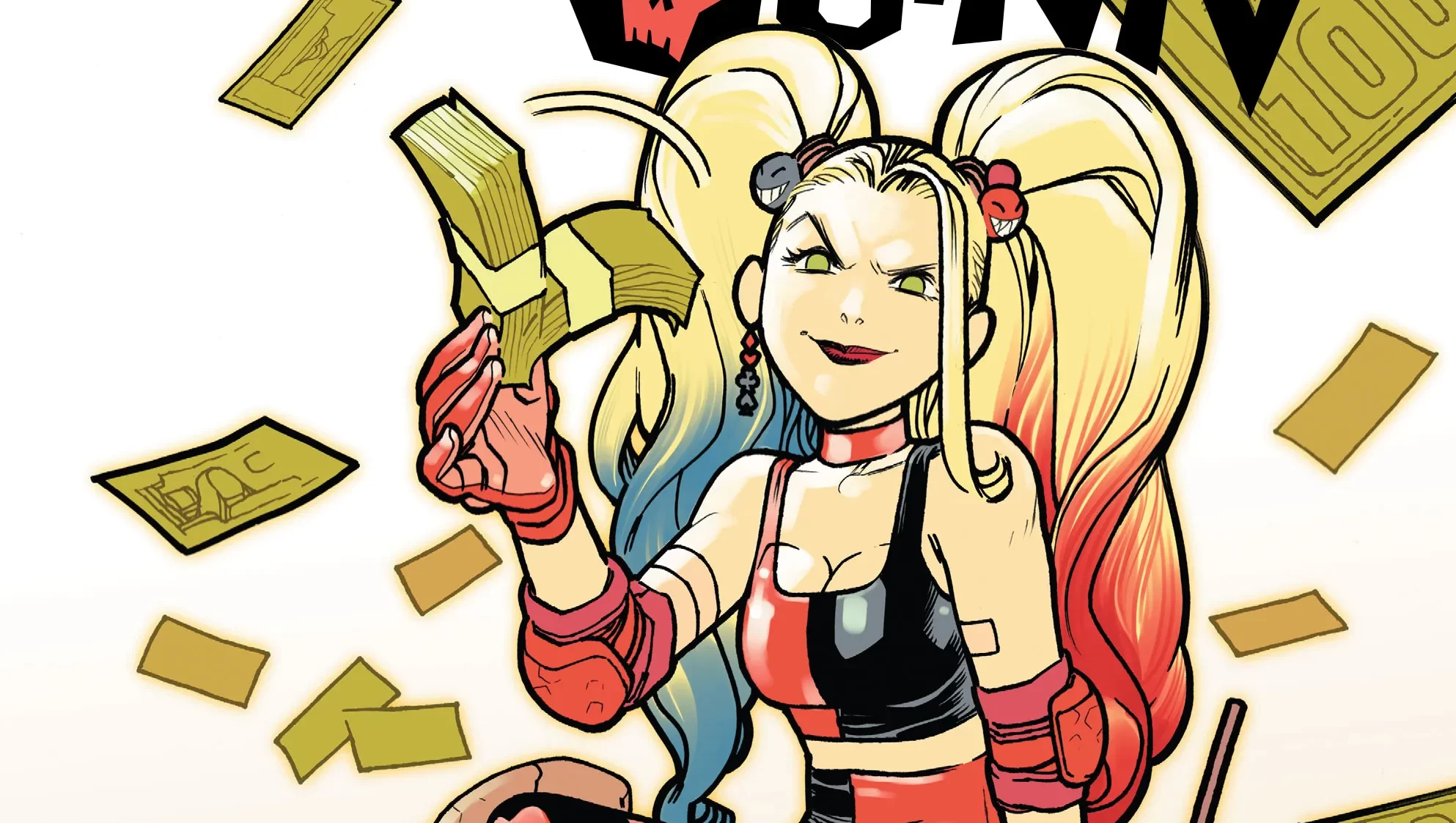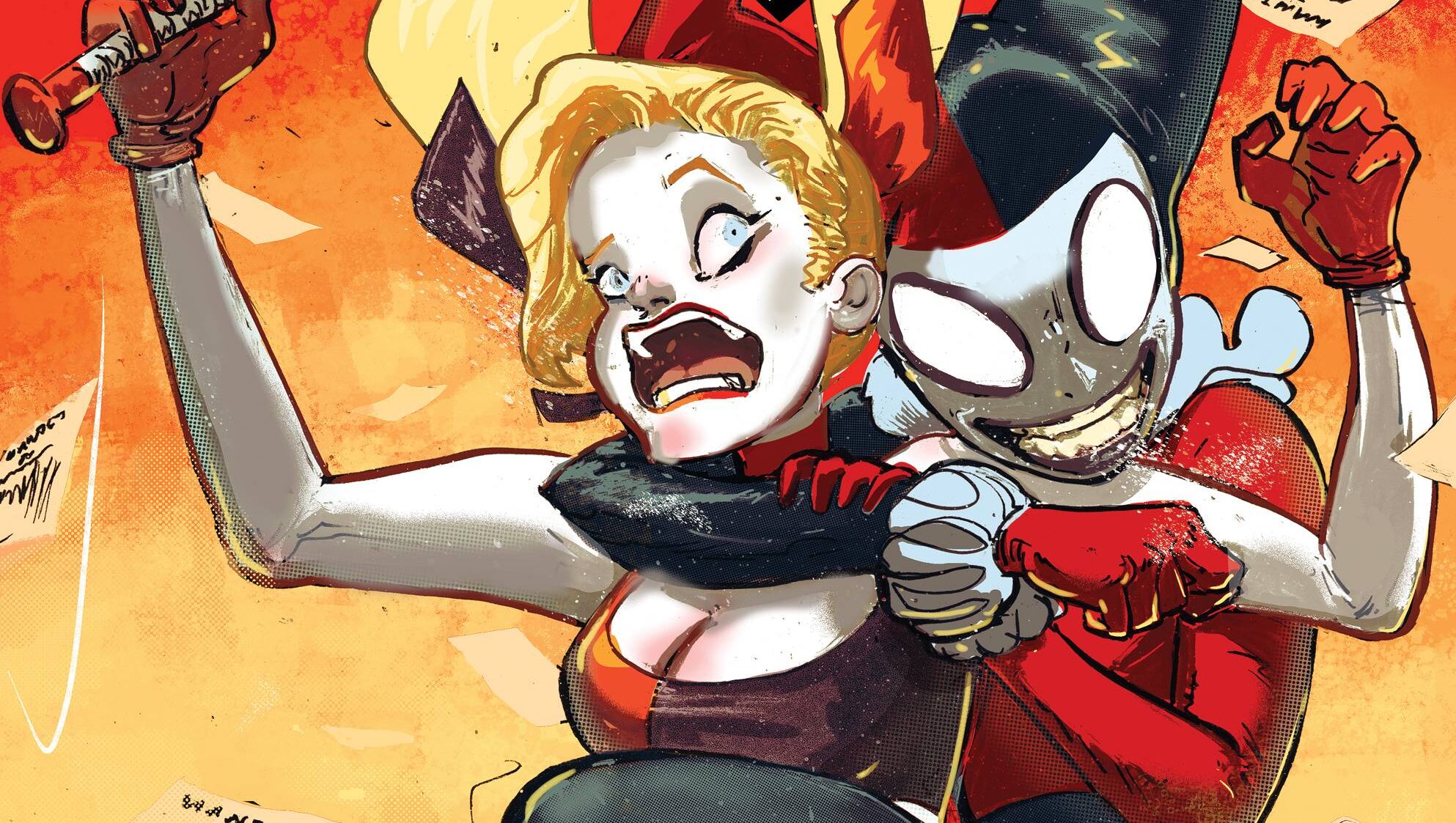It’s a good time to be a Harley Quinn fan. Her 30th anniversary’s coming up, Season 3 of her show is in full swing, and DC has graced us all with four straight weeks of new Harley Quinn content. We’re here to catch you up with Harley’s final confrontation with Verdict in Harley Quinn #17, written by Stephanie Phillips, drawn by Riley Rossmo, colored by Ivan Plascencia, and lettered by AndWorld Design. Next, Harley goes to spaaaace, accompanied by a not-quite Suicide Squad run by none other than Luke Fox, in Harley Quinn #18, #19 and #20, written by Stephanie Phillips, drawn by George Duarte (and Simone Buonfantino in #20), colored by Romulo Fajardo Jr. and lettered by AndWorld Design.
Well. Wow. There’s a lot of Harley content out there now, isn’t there? The show is back, the comics are coming out one-a-week, and we’ve even got a new series coming up pretty soon! It’s been a month, and we’ve got some catching up to do, so let’s begin with…
Harley Quinn #17 – The Final Verdict
In which Verdict and Harley Quinn have their last showdown. More sadly, it’s the last issue of the Riley Rossmo/Ivan Plascencia team for who knows how long.
I wasn’t expecting a lot from this issue. The most interesting thing about Verdict isn’t whether or not Harley can defeat her, but what drives her — and last issue handled that pretty well. Still, stories need their conclusions, and I’m glad that this issue messed around and had fun with it, while giving us a sweet goodbye to the art team as well.
The opening fight hallucination was a silly delight, but it’s not long before we’re back into a more serious state, as a cornered Verdict ups the stakes by taking City Hall hostage. With Harley injured, Batwoman’s all prepared to take Verdict out — but whose book is this, anyway?
Harley takes the win, panels chaotically spill across the page as they fight amidst the background of Batwoman defusing one bomb after another. The fight’s fairly straightforward — the best part of the issue is right at the end, as Harley and Kevin reconnect after the chaos – but we’re all reminded of just why we’re going to miss this art team so.
Despite the shame that Verdict and our previous villains have tried to make Harley feel, she’s proud of herself. She’s grown from the version of Harley we saw when this series began. This moment on the rooftop is her taking a moment to appreciate that — giving the readers a chance to do the same.
It’s not a bad jumping off point — nor a bad place for the series to take a breather, for a bit, because now we’re jumping right into…
Harley Quinn…in Spaaaaaace!
Three issues in, and this arc is a real mess. A mess wrapped around a fun idea for a story that’s meant to be a loose Dark Crisis tie-in. This story could have been better executed. The tale it could have been often shines through, enough to make this a pretty fun read overall — but still a step down from what’s come before, and not just because of the lack of one of my favorite art teams.
Let’s talk about the art first, from George Duarte and Simone Buonfantino, because that’s the most noticeable shift here. It’s simple, cute and playful. It’s a look that belongs in animation, and that energy comes across in the page. Individual panels are a delight of charming, emotive silliness. If I had one complaint, it would be that panels don’t always flow well from one to the next — action doesn’t move all that great across the pages. Romulo Fajardo does a great job with colors however, giving each of those panels their own life and warmth.
Our tale is a riff on the Suicide Squad. Only instead of forcing DC’s villains into action with bombs in their necks, you have the former Batwing, Luke Fox, handing out blank cheques…though his methods of recruitment leave a little something to be desired. Harley Quinn #18 opens with Harley being chased down by half the team — Killer Frost, Bronze Tiger and Dreadbolt. After knocking her out, she’s introduced to the rest of the team – Lashyna and, surprise, surprise, Verdict (who I was not expecting to see again this soon). Verdict was definitely a fun villain, but not someone who stood out enough to warrant an immediate return.
That’s one of the main problems with this team: it’s a group of people who just aren’t all that interesting on their own. They’re all relative unknowns. The book requires you to know something of their backstory in order to be invested in them, because it’s not until Harley Quinn #20 that they start to become interesting.
In Space, No One Can Hear You Narrate
Harley herself doesn’t fare too well in a book this crowded. Not just because of the increased number of things trying to kill her as the team attempts to get back Element X from a defunct Justice League base, but because with so many people to focus on, some of the nuance of Harley’s characterization is lost; she’s relegated to being the clown, and little else. The narrative captions do very little to help with that — for this arc, Harley’s become a side character in her own book. The spotlight is on Luke Fox here. I’m definitely growing invested in that story – especially in Harley Quinn #20, where the quality of storytelling takes a step up – but Luke Fox isn’t the character I came here to see.
After getting to #20, Harley Quinn #18 and #19 almost feel like a waste of time. Lashyna is corrupted by Element X In issue #20, which is gaining its own sentience — and the Suicide Squad XX (as the book calls the team) falls apart to in-fighting. It’s clear that this is the point that the comic wanted to get to, but needed to do some set-up to get there first.
With that set-up out of the way, I’m really looking forward to what’s coming up next. I still wish this felt more like a Harley Quinn book. But as long as this shift in focus is temporary, I’m definitely along for the ride.
Armaan is obsessed with the way stories are told. From video games to theater, TTRPGs to comics, he has written for, and about, them all. He will not stop, actually; believe us, we've tried.






